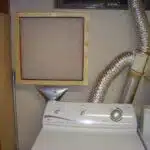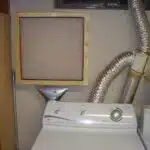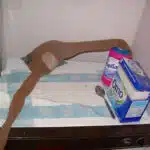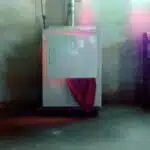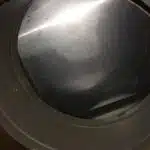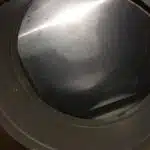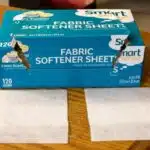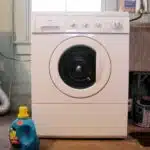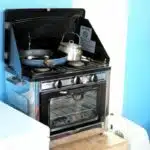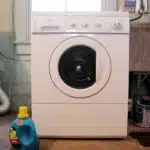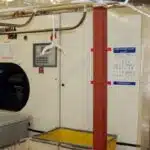Dryers have become an indispensable appliance in every household. They save time and energy by drying clothes quickly, but they also require regular maintenance to keep them functioning efficiently. One of the most important maintenance tasks is cleaning the dryer, which not only improves its performance but also prevents the risk of fire hazard.
As a dryer cleaning expert, I understand the importance of maintaining your dryer to ensure optimal performance and safety. In this article, I will guide you through the process of how to go about dryer cleaning the smart way. With my tips and tricks, you can clean your dryer efficiently while minimizing the risks associated with dryer use. Whether you are a homeowner or a renter, this article will provide you with valuable insights on how to maintain your dryer and keep it running smoothly for years to come.
Understanding The Importance Of Dryer Maintenance
Regular dryer maintenance is crucial to ensure the longevity of your machine and prevent potential hazards. Neglecting dryer cleaning can lead to a variety of consequences, ranging from inefficient drying times to house fires. Therefore, it is important to take the necessary steps in caring for your dryer regularly.
One of the most common reasons for dryer malfunction is a lack of proper cleaning. Lint buildup in the vents and ducts can restrict airflow, leading to longer drying times and higher energy bills. This not only puts a strain on your wallet but also increases wear and tear on your machine, shortening its lifespan significantly.
Moreover, neglecting regular dryer maintenance can result in more severe consequences such as house fires. According to the National Fire Protection Association (NFPA), between 2010-2014, US fire departments responded to an estimated average of 15,970 home structure fires involving clothes dryers or washing machines each year. This highlights the importance of taking care of your machine properly and ensuring that all components are clean and functioning correctly.
To avoid these risks, it is important to understand how regular dryer maintenance can benefit you in the long run. In the next section, we will discuss signs that indicate when your dryer needs cleaning and how you can go about maintaining it efficiently.
Signs Your Dryer Needs Cleaning
As an expert in dryer cleaning, it is essential to understand the importance of regular dryer maintenance. Not only does it ensure the efficient and safe operation of your appliance, but it also extends its lifespan. Neglecting to clean your dryer can lead to a buildup of lint, dust, and other debris that clogs the ventilation system and increases the risk of fire.
One of the most obvious signs that your dryer needs cleaning is when clothes take longer than usual to dry. This indicates that there is a blockage in the ventilation system, preventing hot air from escaping properly. Another sign is when you notice excessive heat or moisture around your dryer during operation. This could mean that the ventilation system is not functioning correctly, leading to a buildup of heat and humidity within the appliance.
If you notice any of these signs or if it has been over a year since your last dryer cleaning, it’s time to take action. Start by unplugging your dryer and removing any visible lint or debris from the lint trap and ductwork. The next step would be to schedule a professional cleaning service for a thorough inspection of your appliance’s internal components. Remember, routine maintenance is critical in keeping your dryer running efficiently and safely for years to come.
Preparing For Dryer Cleaning
- Preparation is the key to successful dryer cleaning; it is important to gather all necessary supplies before beginning the process.
- First, the lint trap should be removed and cleaned out thoroughly to ensure that proper airflow is maintained.
- Next, an inspection of the dryer vents should be conducted to identify any obstructions or blockages.
- If any blockages are found, specialized tools should be used to remove them in order to ensure that the airflows freely.
- After the lint trap and vents have been cleared, the interior of the dryer should be wiped down with a damp cloth to remove any dust or debris.
- Finally, the lint trap should be replaced and the dryer should be tested for proper operation before use.
Gathering Supplies
Organizing your cleaning supplies is an essential step in dryer cleaning. Before starting, make sure you have all the necessary tools and equipment to ensure efficient and effective cleaning. The first thing to do is to choose cleaning products that are compatible with your dryer type. Avoid using harsh chemicals that can damage the dryer components.
Next, gather all the supplies needed for the task such as a vacuum cleaner, microfiber cloth, crevice tool, and a dryer vent brush. Ensure that these materials are readily accessible before starting the cleaning process. This will help save time and energy while avoiding any inconvenience during the process.
In conclusion, choosing appropriate cleaning products and organizing your cleaning supplies well is crucial for successful dryer cleaning. These steps will ensure that your dryer is in good condition, prolong its lifespan, and reduce potential fire hazards caused by buildup lint. By following these simple steps, you can clean your dryer efficiently without any hassle.
Removing Lint Trap
One of the essential steps in preparing for dryer cleaning is removing the lint trap. Lint trap maintenance is crucial to prevent dryer fires caused by excessive lint buildup. Before starting, make sure that your dryer is unplugged and cool to avoid any accidents.
To remove the lint trap, locate it inside the dryer drum or on top of the dryer. Gently pull it out and remove any visible lint accumulated on its surface. Use a soft-bristled brush or a microfiber cloth to wipe away any remaining debris or particles. If necessary, wash the lint trap with mild soap and warm water and let it dry completely before reinstalling.
Removing the lint trap may seem like an easy task, but it can significantly impact your dryer’s performance and safety. By regularly cleaning your lint trap, you can prevent fire hazards and ensure that your dryer runs efficiently. Make sure to include this step in your preparation for dryer cleaning to achieve optimal results.
Cleaning Dryer Vents
Preparing for dryer cleaning involves various essential steps to ensure optimal performance and safety. In addition to removing the lint trap, it’s crucial to clean the dryer vents regularly. The dryer vent is responsible for carrying hot air and moisture out of the dryer, but over time, it can accumulate lint and debris, leading to reduced efficiency and potential fire hazards.
Cleaning your dryer vents can be done using a DIY approach or by hiring a professional. While DIY cleaning may seem cost-effective, it’s not always the safest option. Professionals have specialized equipment that ensures thorough cleaning without damaging the vents or causing any accidents. Moreover, professionals can identify any underlying issues with your dryer’s ventilation system and provide adequate solutions.
The cost of cleaning your dryer vents depends on several factors, such as the location of the vents and their accessibility. On average, professional vent cleaning services can range from $100-$300, while DIY methods may only require purchasing a vent cleaning kit that costs around $20-$50. However, investing in professional services is worth considering since it guarantees efficient performance and reduces the risk of fire hazards caused by clogged vents.
Gathering The Necessary Tools
To properly clean a dryer, it is important to have the appropriate tools on hand. Gathering these tools in advance can save time and make the cleaning process more efficient. Neglecting to do so can lead to frustration, wasted effort, and potentially even damage to the dryer itself. Therefore, choosing appropriate tools is an essential step in ensuring a successful dryer cleaning.
When selecting tools for dryer cleaning, there are several factors to consider. First and foremost, the tools should be safe for use with your specific model of dryer. Secondly, they should be high-quality and durable enough to withstand repeated use. Finally, they should be able to reach all areas of the dryer that require cleaning. By taking these factors into account, you can ensure that you have everything you need before beginning the cleaning process.
Once you have gathered all necessary equipment for your dryer cleaning project, it is important to store them properly when not in use. This will help keep them organized and prevent damage or loss of any items. A simple solution is to create a designated spot for your cleaning supplies in a closet or cabinet near the laundry room. You may also want to consider using a storage container or toolbox specifically for your dryer cleaning equipment. By maintaining proper storage habits, you can ensure that your tools remain in good condition and ready for use whenever you need them.
Now that we have discussed how important it is to choose appropriate tools and properly store cleaning equipment let us move on to removing lint from the lint trap.
Removing Lint From The Lint Trap
To ensure that your dryer is functioning at its optimal level, it is important to regularly remove the lint from the lint trap. This not only provides a more efficient drying cycle, but also reduces the risk of fire hazards. While some may think that simply removing visible lint from the trap is sufficient, deep cleaning is necessary for a thorough job.
Deep cleaning involves removing any residual lint and debris that may have accumulated in areas beyond the lint trap. There are several ways to do this, such as using a vacuum cleaner with an attachment specifically designed for dryer cleaning or purchasing professional services for a more comprehensive job. It is recommended to perform deep cleaning at least once every six months, or more frequently if you use your dryer on a daily basis.
If you are unable to perform deep cleaning yourself, consider hiring professional services. These services offer a more thorough job and can identify any potential issues with your dryer before they become major problems. Additionally, they have access to specialized tools and equipment that make the process easier and more effective. By investing in professional services, you can rest assured that your dryer will be functioning at its best capacity.
Moving on from removing lint from the lint trap, it’s time to tackle another important aspect of dryer maintenance: cleaning the dryer drum. By doing so, you not only provide a better environment for your clothes to dry in but also extend the life of your machine.
Cleaning The Dryer Drum
As a dryer cleaning expert, I have seen it all. From lint clogged vents to burnt clothes, the dryer can be a dangerous machine if not maintained properly. One of the most important steps in maintaining your dryer is cleaning the drum. Neglecting this step can lead to an inefficient drying process and even damage to your clothes.
One of the easiest ways to clean the dryer drum is by using dryer sheets. Simply take a sheet and rub it along the inside of the drum. The sheet will pick up any loose debris and leave behind a fresh scent. This method should be used after every few loads to ensure optimal performance.
For those who prefer DIY solutions, there are plenty of options available. A mixture of vinegar and baking soda can be applied to a cloth and used to scrub the inside of the drum. Alternatively, a solution of dish soap and warm water can also be used. Whichever solution you choose, make sure to rinse thoroughly with water afterward.
Now that we have covered how to clean the dryer drum, it’s time to move on to another crucial step in maintaining your dryer: cleaning the exhaust vent. By neglecting this step, you risk a fire hazard and reduced efficiency in drying your clothes. But fear not, as I will guide you through this process with ease.
Cleaning The Exhaust Vent
After cleaning the dryer drum, it’s important to move on to the next step – cleaning the exhaust vent. The exhaust vent is responsible for removing hot and humid air from the dryer. Over time, lint and other debris can accumulate in this area, making it difficult for air to flow freely. This buildup can also be a fire hazard.
One way to clean the exhaust vent is by using a vacuum cleaner with a long hose attachment. Simply insert the hose into the vent and start vacuuming out any lint or debris you find. If you don’t have a vacuum cleaner, you can also use a vent cleaning brush. This tool is specifically designed to remove lint and debris from small spaces like exhaust vents.
It’s important to remember that you should never skip this step when cleaning your dryer. Neglecting to clean your exhaust vent could result in poor performance and even lead to a potential fire hazard. By regularly cleaning your dryer’s exhaust vent, you’re not only improving its efficiency but also ensuring that it runs safely and smoothly for years to come.
Transition: Once you’ve finished cleaning the exhaust vent, it’s time to move on to another crucial part of maintaining your dryer – cleaning the exhaust duct.
Cleaning The Exhaust Duct
Cleaning the exhaust duct is a crucial step in dryer maintenance. Over time, lint and debris can accumulate in the duct, causing the dryer to work harder and potentially leading to a fire hazard. To avoid this, it’s important to clean the duct regularly using appropriate cleaning tools.
Firstly, before beginning any cleaning process, ensure that your dryer is unplugged from the power source. The next step is to disconnect the duct from both the dryer and the vent outside. Once disconnected, use a specialized brush or vacuum attachment to remove any debris from inside the duct. It’s also important to clean any other areas where lint may have accumulated.
Preventative measures can also be taken to reduce the amount of lint buildup in your exhaust duct. These include regularly cleaning your dryer’s lint trap after each use and using shorter, straighter ducts when installing your dryer. By taking these precautions and regularly cleaning your exhaust duct, you can help ensure that your dryer functions efficiently for years to come.
- Use a specialized brush or vacuum attachment designed for cleaning dryer exhaust ducts.
- Ensure that all components are properly reconnected once cleaning is complete.
- Consider hiring a professional if you are unsure about how to safely clean your exhaust duct.
- Check for any damage or restrictions in your exhaust system that may need repair.
- Regularly clean out your dryer’s lint trap after each use and consider using shorter, straighter ducts when installing your dryer.
Moving forward towards checking other parts of your dryer, it’s essential not to overlook checking the condition of its belt and rollers. Neglecting this aspect could lead to costly repairs or even replacement of parts or entire machines. Therefore, proper care must be given by scheduling regular checks on these components to ensure their optimal performance in supporting smooth operations of your drying machine.
Checking The Dryer Belt And Rollers
To ensure the smooth operation of your dryer, it is essential to periodically check the dryer belt and rollers. These components are responsible for moving the drum, which dries your clothes. Over time, the belt can become loose or even snap, while the rollers may develop flat spots or wear out altogether. If you notice any issues with these parts, it’s important to take action right away.
Replacing components such as the dryer belt and rollers is a simple process that can be done by most homeowners with basic tools. First, unplug your dryer from its power source and locate the belt and rollers under the drum. Inspect them for signs of wear and tear, such as fraying, cracking or flattening. If you notice any damage, remove the faulty component(s) and replace them with new ones.
In addition to replacing worn-out components, it’s also important to lubricate moving parts like the rollers regularly. This will help prevent wear on these parts and reduce friction in your dryer’s motor. You can use a silicone-based lubricant on your dryer’s rollers and idler pulley to keep them running smoothly. Avoid using oil-based lubricants as they can attract lint and dirt which may cause more problems down the line.
Now that you’ve checked your dryer’s belt and rollers, you’re one step closer to having a well-functioning machine. In our next section, we’ll discuss how to clean the exterior of your dryer to keep it looking great and running efficiently.
Cleaning The Dryer Exterior
Having checked the dryer belt and rollers, it’s time to move on to cleaning the exterior of your dryer. As a dryer cleaning expert, I can tell you that this is just as important as checking the internal components. A clean exterior not only looks good but also prevents potential hazards such as fire outbreaks caused by accumulated lint.
To begin with, use appropriate cleaning techniques when cleaning your dryer’s exterior. Avoid using harsh chemicals or abrasive materials that can scratch or damage the surface. Instead, use a soft cloth or sponge and mild detergent to wipe down the exterior. For stubborn stains, consider using specialized cleaners designed for dryers.
In addition to regular cleaning, preventive measures are also vital in keeping your dryer in top condition. These include removing lint from the lint trap after every cycle and ensuring proper ventilation by regularly inspecting and cleaning the exhaust ducts. By taking these simple measures, you can prolong the lifespan of your dryer while keeping it safe and efficient.
Moving forward, reassembling the dryer requires careful attention to detail to ensure that all components are properly aligned and tightened.
Reassembling The Dryer
Proper reassembly is crucial to ensure that your dryer functions at its optimal level. After cleaning the dryer thoroughly, it is essential to inspect and replace any worn-out or damaged parts before proceeding with the reassembly process. Begin by reversing the steps you took during disassembly, ensuring that all screws, wires, and components are correctly placed back in their respective positions.
One common mistake to avoid when reassembling a dryer is rushing through the process. Take your time and double-check every step to ensure that you have not missed anything. Rushing through the reassembly process may lead to incorrect installation of parts which can cause further damage to the machine.
Another mistake people often make is using incorrect tools for reassembly. Always use appropriate tools recommended by the manufacturer to avoid damaging any parts of your dryer during assembly. Refer to your user manual for specific instructions on proper tool usage.
Transition: With proper reassembly complete, it’s time to test and see if all the components are functioning as they should be.
Testing The Dryer
Imagine this scenario: you have just finished cleaning your dryer, but when you turn it on, the clothes are not drying as fast as they should. Frustrated, you may be wondering what went wrong and how to fix it. This is where testing the dryer airflow comes in handy.
Testing dryer airflow is an essential step in ensuring that your dryer is working efficiently. Start by turning on the dryer and placing your hand near the vent outside. If you feel a strong flow of air coming out, then your machine is functioning correctly. However, if there isn’t much air coming out or none at all, then there’s likely a blockage somewhere in your system.
Troubleshooting common dryer issues can save you time and money down the line. A clogged lint filter or exhaust vent can cause reduced airflow, which leads to longer drying times and even potential fire hazards. Other common issues include malfunctioning thermostats or heating elements that require replacement.
- Here are four tips for testing your dryer’s performance:
- Clean the lint trap before every load.
- Check for any obstructions in the exhaust vent.
- Use a vacuum attachment to clean inside the lint trap area.
- Schedule routine maintenance with a professional technician.
In summary, testing dryer airflow is crucial for proper functionality and energy efficiency of your machine. Troubleshooting common problems early on can prevent larger issues from arising down the line. By following these tips for maintaining your dryer, you can ensure that it remains in top condition for years to come.
Tips For Maintaining Your Dryer
Proper maintenance of your dryer is crucial to keep it running efficiently and safely. One of the most important aspects of maintaining your dryer is to clean it regularly. The importance of frequency cannot be overstated. A dirty dryer can lead to a host of problems such as decreased efficiency, increased energy costs, and even fire hazards. It is recommended that you clean your dryer at least once a year.
You have two options when it comes to cleaning your dryer: DIY or professional cleaning. While DIY cleaning can save you money, it’s important to note that it may not always be the best option. If you’re not comfortable or experienced with cleaning dryers, it’s best to leave it to the professionals who have the necessary tools and expertise. Professional cleaning services can ensure that your dryer is thoroughly cleaned and properly maintained.
In summary, maintaining your dryer is crucial for its longevity and overall safety. Cleaning your dryer regularly is an essential part of this maintenance process. Whether you decide to do it yourself or hire professionals, make sure that you prioritize the importance of frequency in keeping your dryer in top condition.
Transitioning into the subsequent section about common dryer cleaning mistakes to avoid, we will discuss some of the most frequent errors people make when attempting to clean their dryers themselves.
Common Dryer Cleaning Mistakes To Avoid
Maintaining a clean and well-functioning dryer is essential for the longevity of the appliance. However, many homeowners make common mistakes when attempting to clean their dryers at home. One of these mistakes is using the wrong cleaning products or tools, which can damage the dryer’s delicate components.
To avoid these common dryer cleaning mistakes, it’s essential to follow some tips for effective dryer cleaning. First and foremost, always refer to your manufacturer’s instructions before starting any cleaning process. Secondly, be sure to unplug your dryer from its power source before attempting any cleaning. Lastly, use only appropriate cleaning products and tools that are recommended by the manufacturer.
Another mistake many homeowners make when attempting to clean their dryers is neglecting or forgetting to clean certain areas of the machine altogether. These areas include the lint trap, vent hose, and ductwork connected to the dryer. It’s crucial to regularly clean these areas as they can accumulate lint and debris over time, leading to reduced efficiency and even potential fire hazards.
In conclusion, avoiding common dryer cleaning mistakes is crucial in maintaining a safe and efficient appliance in your home. Be sure to follow manufacturer recommendations, unplug your machine before cleaning, use appropriate tools and products, and don’t forget about those often-neglected areas like the lint trap and vent hose. By doing so regularly, you’ll enjoy optimal performance from your dryer for years to come. But what if you’ve made some mistakes or neglected maintenance? In the next section, we’ll discuss when it’s time to call a professional for help with your dryer cleaning needs.
When To Call A Professional For Dryer Cleaning
Professional dryer cleaning is recommended once a year to ensure the efficient performance of the appliance. While DIY dryer cleaning tips are widely available online, there are instances when it’s best to call a professional for help. One of the most important factors to consider is the cost of professional dryer cleaning versus doing it yourself.
The cost of professional dryer cleaning varies depending on your location and the company you choose. However, it typically ranges from $100 to $200. This may seem expensive, but it’s important to remember that professionals use specialized tools and equipment that effectively remove lint buildup, which can be difficult to do on your own. Additionally, regular professional cleaning can prolong the lifespan of your dryer and prevent costly repairs down the line.
If you notice signs that indicate a more serious problem with your dryer such as strange noises or a burning smell, it’s best to call a professional immediately. Attempting to fix these issues yourself can be dangerous and cause further damage to your appliance. A professional will have the expertise and experience needed to diagnose and repair any issues quickly and safely.
In conclusion, while DIY dryer cleaning tips are helpful for maintaining your appliance in between professional cleanings, there are times when it’s necessary to call in an expert. The cost of professional dryer cleaning may seem high, but it’s worth it in terms of preventing potential safety hazards and extending the life of your appliance. Don’t hesitate to call for help if you notice any unusual signs coming from your dryer – this will save you time, money, and potential headaches down the line!
Conclusion
Maintaining your dryer is crucial for its longevity and functionality. Regular cleaning can prevent potential fire hazards and ensure that your clothes dry efficiently. Signs that your dryer needs cleaning include longer drying times, overheating, and a burning smell during operation.
To prepare for dryer cleaning, gather necessary tools such as a vacuum cleaner, brush, and screwdriver. Begin by removing the lint from the lint trap before checking the venting system for any obstructions or damage. After cleaning, test the dryer to ensure it is running smoothly.
To maintain your dryer’s performance, avoid overloading it and use appropriate detergents for your laundry. It’s also crucial to avoid common mistakes such as using fabric softener sheets on the lint filter or failing to clean the vent regularly.
If you are unsure about how to go about cleaning your dryer or if you notice persistent problems even after cleaning, it’s best to call a professional for assistance. Don’t let neglect lead to costly repairs or worse yet, a dangerous fire hazard. Take care of your dryer today for worry-free use tomorrow!
Image Credits


